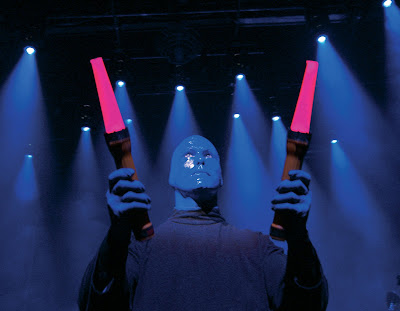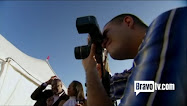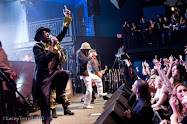 ARTS & EVENTS
ARTS & EVENTS'The Wrestler' Director: Darren Aronofsky
Written by Washington Post Express contributor Alfredo Flores
Photo by Niko Tavernies for Express
WRESTLERS PROTECT EACH OTHER from harm in the ring, sell their baby face or heel personae and, after taking a beating, they grab a beer together, maybe hit a strip club. This is what happens in the underground wrestling circuits, and in the film "The Wrestler." The story of a washed- up wrestler doing whatever it takes — performance-enhancing drugs, complete disregard for his body and his family — to reach the big time again stars Mickey Rourke, an actor with comeback issues of his own. Rourke is gaining some serious Oscar buzz for his portrayal of Randy "The Ram" Robinson. » EXPRESS: What kind of physical transformation did Rourke go through?» ARONOFSKY: The physicality was really hard. I wasn't sure if Mickey could pull it off. He's normally 190, a big guy, but not Hulk Hogan. He put on 36 pounds of muscle over six months and turned into a wrestler.» EXPRESS:Who did you base his character on?» ARONOFSKY: I'd say Randy "The Ram" is an amalgamation of a lot of different wrestlers. The more of these old-timers that we met, the more stories we'd heard before, a lot of the stories were similar, so we kind of shaped it into our own story.» EXPRESS:Who was the guy Rourke wrestles in the film's most notoriously gruesome fight scene? » ARONOFSKY: Necro Butcher is who he wrestles, an underground cult American hero. He's a marquee top villain draw. He's the last guy on the card, and everyone in the crowd goes crazy. Although now he just changed his name to Hollywood Dylan Summers, he has a manager named Aaron Aronofsky who also gets beat up a lot. He's the real deal, a hardcore wrestler, and that stuff really goes on.» EXPRESS:How come so many scenes were shot from behind Rourke?» ARONOFSKY: I wanted it to be sort of a proactive documentary — someone looks over; you react to it. In a documentary there's no way to know where they'll move. But here, it just became a language. » EXPRESS:What kind of reaction have you had from pro wrestlers?» ARONOFSKY: We brought out Rowdy Roddy Piper once and, after the movie, he stands up and all we see is a silhouette of a man. We
 were terrified that he hated the movie, but he basically came up to Mickey, gave him a hug and starting sobbing in his arms because it was the first time that his story has been told. For Mickey and me it was a big thrill to hear the appreciation from those guys. » EXPRESS:Where did the idea come from?» ARONOFSKY: When I graduated from film school, I had a bunch of ideas and one of them was "The Wrestler." Back in '02, me and producer Scott Franklin started working on some ideas and we read this script from Rob Siegel, who was the editor of the Onion. He ... had a lot of humor, but also a lot of darkness. And we started talking and, 25 drafts later, we shot it. It was a long process. » Area theaters, opens Thu., Dec. 25 Posted By Express at 12:00 AM on December 22, 2008 Tagged in Arts & Events , Film , Weekend Pass
were terrified that he hated the movie, but he basically came up to Mickey, gave him a hug and starting sobbing in his arms because it was the first time that his story has been told. For Mickey and me it was a big thrill to hear the appreciation from those guys. » EXPRESS:Where did the idea come from?» ARONOFSKY: When I graduated from film school, I had a bunch of ideas and one of them was "The Wrestler." Back in '02, me and producer Scott Franklin started working on some ideas and we read this script from Rob Siegel, who was the editor of the Onion. He ... had a lot of humor, but also a lot of darkness. And we started talking and, 25 drafts later, we shot it. It was a long process. » Area theaters, opens Thu., Dec. 25 Posted By Express at 12:00 AM on December 22, 2008 Tagged in Arts & Events , Film , Weekend Pass

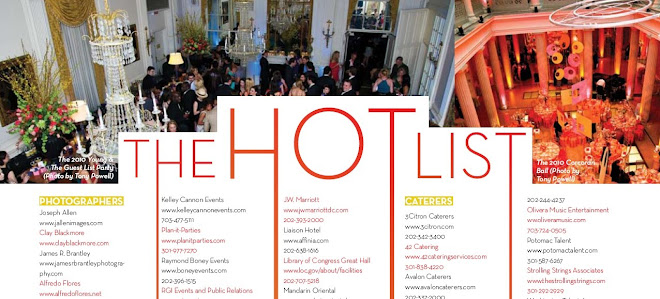











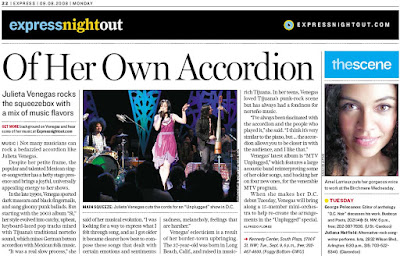









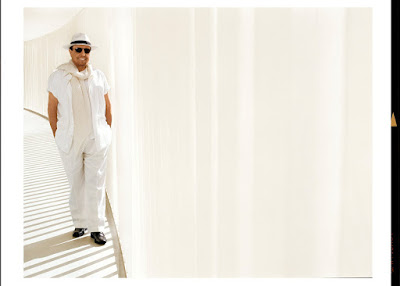 o on the Rhodes. Mendes moves to clavinet on the party jam "Funky Bahia," which, as the title suggests, neatly combines funk and tropical sounds from the coastal state, particularly the heavy percussion and smooth chanting chorus. Jobim's "Somewhere in the Hills," popularized by Ella Fitzgerald in 1981, gets another remake, this time with Natalie Cole scatting and a fine fluegelhorn solo by Till Brönner. Much like Timeless, the new album is loaded with guest performers, the most interesting of which is Italian MC Jovanotti—riding the catchy swing beat of "Lugar Comum," his spitfire lyrics flow well with Mendes' piano chords and the soft sizzle of Mike Shapiro's drumming. Less successful is Latin pop-rock megastar Juanes, who tackles "Y Vamos Ya (…Let's Go),"despite having his vocals drowned out by flute, guitar, bass, drums, and a whopping five percussionists. But it's hard to argue with Mendes' overall strategy: Encanto's mix of hip-hop, tropical grooves, and classic remakes should keep Mendes' fans, old and new, happy all summer.
o on the Rhodes. Mendes moves to clavinet on the party jam "Funky Bahia," which, as the title suggests, neatly combines funk and tropical sounds from the coastal state, particularly the heavy percussion and smooth chanting chorus. Jobim's "Somewhere in the Hills," popularized by Ella Fitzgerald in 1981, gets another remake, this time with Natalie Cole scatting and a fine fluegelhorn solo by Till Brönner. Much like Timeless, the new album is loaded with guest performers, the most interesting of which is Italian MC Jovanotti—riding the catchy swing beat of "Lugar Comum," his spitfire lyrics flow well with Mendes' piano chords and the soft sizzle of Mike Shapiro's drumming. Less successful is Latin pop-rock megastar Juanes, who tackles "Y Vamos Ya (…Let's Go),"despite having his vocals drowned out by flute, guitar, bass, drums, and a whopping five percussionists. But it's hard to argue with Mendes' overall strategy: Encanto's mix of hip-hop, tropical grooves, and classic remakes should keep Mendes' fans, old and new, happy all summer.
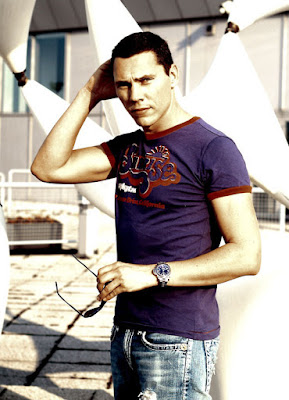





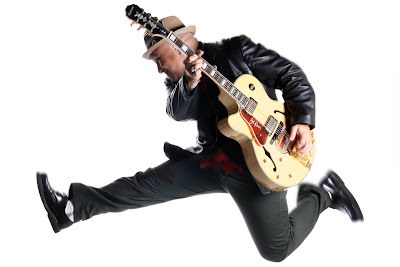 es.) Traditional Latin sounds are mixed in with American themes: "Tropicana 50" foregrounds an Afro-Cuban swing beat, and "Cristina" features backup vocals and mariachi-style shouts from Juan Carlos Goméz of Mexican reggae group La Verbena Popular—the cumbia-ska-rap union with a familiar reggae feel, despite its Spanish verse "No todo es una fiesta de ganja" ("Not everything is a ganja party"). There's even a hint of British punk on "Lucha Libre Lovers" and "El Apagón." There's no rhyme or reason to Supersaund 2012, but Flavio makes it all work. Los Fabulosos Cadillacs, after all, were famous for their lack of a musical center, playing Caribbean music, covering "What's New Pussycat?" with Fishbone and playing with the Clash's Mick Jones. Flavio's solo career may not have the long-term impact of his old band, but he's still able to give old and new fans something worth dancing to.
es.) Traditional Latin sounds are mixed in with American themes: "Tropicana 50" foregrounds an Afro-Cuban swing beat, and "Cristina" features backup vocals and mariachi-style shouts from Juan Carlos Goméz of Mexican reggae group La Verbena Popular—the cumbia-ska-rap union with a familiar reggae feel, despite its Spanish verse "No todo es una fiesta de ganja" ("Not everything is a ganja party"). There's even a hint of British punk on "Lucha Libre Lovers" and "El Apagón." There's no rhyme or reason to Supersaund 2012, but Flavio makes it all work. Los Fabulosos Cadillacs, after all, were famous for their lack of a musical center, playing Caribbean music, covering "What's New Pussycat?" with Fishbone and playing with the Clash's Mick Jones. Flavio's solo career may not have the long-term impact of his old band, but he's still able to give old and new fans something worth dancing to.



